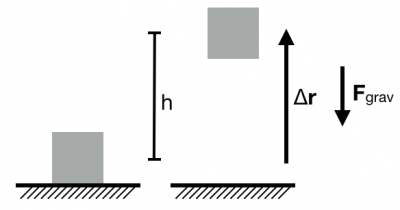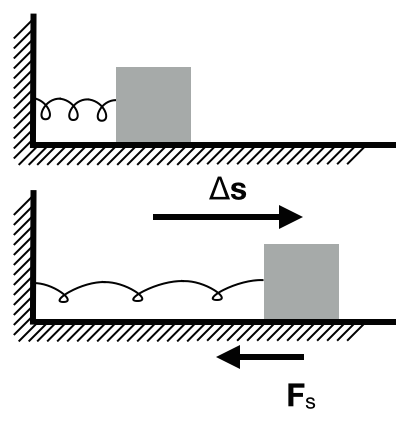This is an old revision of the document!
Types of Potential Energy
(Near Earth) Gravitational Potential Energy
To determine the (near Earth) gravitational potential energy associated with a system consisting of an object and the Earth, consider the work done by the Earth on the object (mass, $m$) that is being lifted to height $h$ above the surface of the Earth.
To calculate the work that Earth does, consider the object as the system.
- System: object; Surroundings: Earth
- Initial state: object at $y_i=0$; Final state: object at $y_f=h$
$$W_{grav} = \vec{F}_{grav}\cdot\Delta\vec{r} = -mg(y_f-y_i) = -mgh$$
So more generally, the work done by the local gravitational force is,
$$W_{grav} = -mg(y_f-y_i)$$
If you include the Earth in your system, so that the system is now the Earth and the object, then potential energy shared between the Earth and the object is given by,
- System: object+Earth; Surroundings: Nothing
- Initial state: object at $y_i=0$; Final state: object at $y_f=h$
$$\Delta U_{grav} = - W_{grav} = +mg(y_f-y_i)$$

